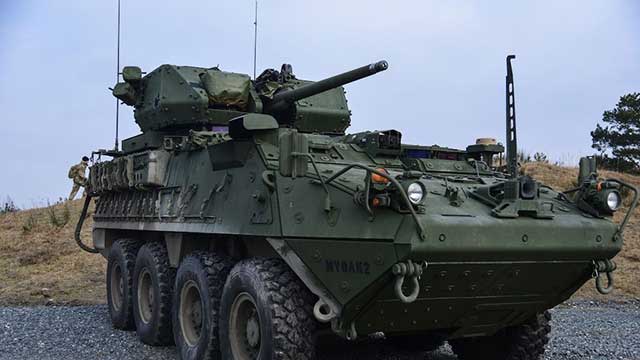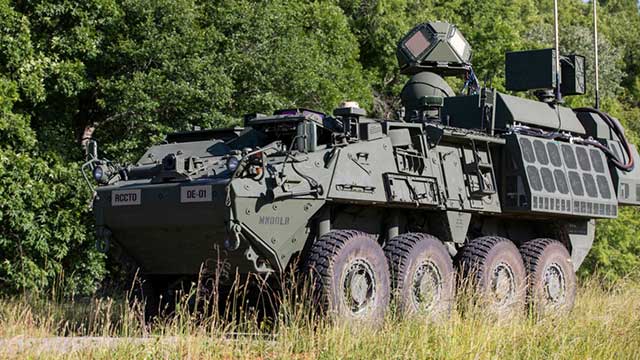El US Army avanza desde hace años en la implementación de Sistemas de Protección Activa (APS) para toda la familia de blindados de esa Fuerza. Las operaciones en curso por la invasión de Rusia a Ucrania, han confirmado la necesidad de equipar a las plataformas blindadas con sistemas APS, para disminuir así las vulnerabilidades frente a las Armas Atan de última generación. Si bien los Tanques Abrams M1 ya están siendo equipados con el APS “Trophy” de origen israelí, en el caso de los Veh Comb Blindados como el Stryker IFV y el Bradley, los desarrollos se encuentran retrasados, ya que se requiere un sistema APS que pueda neutralizar la amenaza a mayor distancia de la plataforma, evitando así causar bajas propias en la infantería a pie que acompaña el avance del IFV.
WASHINGTON — Stryker ICV needs a hard-kill APS [Active Protection System] to defeat threats from a long distance, not as it is now at close range at a time when soldiers are around the vehicle and highly vulnerable to attack. Such an opinion is expressed by Col. William Venable, project manager for the Stryker Brigade Combat Team within the Army’s Program Executive Office Ground Combat Systems.
According to Venable, the war in Ukraine has shown “this shortcoming.” In fact, this shortcoming was not unknown to the US military, but it turns out to have been slow in time, which makes the Stryker ICV less effective in today’s military environment. American Abrams tanks have already begun to receive modern APS, as well as the Bradley infantry fighting vehicle.
BulgarianMilitary.com reminds us that the US Army already has three unapproved APS decisions for Stryker ICV. These are Herndon’s Iron Curtain, Rheinmetall’s APS, and Rafael’s VPS. All three solutions, according to Defense News, “overcome threats very close to the vehicle, leaving the descending soldiers walking around vulnerable.”
Experts in the US emphasize that the APS solution for Stryker ICV must answer key unknowns, such as: how useful is the APS system for soldiers who have already gotten off the vehicle and their perimeter, or what are the residual effects of APS on the vehicle and how the APS interacts with it.
These unknowns may delay the re-installation of hard-kill APS on Stryker. All this means new tests and most likely an additional period to fix problems found during the tests. Of course, there is good news – the Pentagon has already launched an order to develop and supply laser warning systems to be installed on the Stryker ICV. This laser system can be said to be on the final straight, as Lockheed Martin has been working on it since early 2021.

The other good news is that there is a deadline and a plan – Stryker ICV should get its hard-kill APS in fiscal 2024. Col. William Venable says that in reality the United States currently has APS solutions on Stryker, but whether a quick solution will meet the minimum required characteristics. As Venable philosophically commented, “If we have to go fast, I don’t know if we need to solve those problems to go fast.”
In any case, the Pentagon must find time to solve the task that eliminates the problems described. BulgarianMilitary.com reminds us that the integration of APS on Abrams tanks in Europe took two years.
Fuente: https://bulgarianmilitary.com


